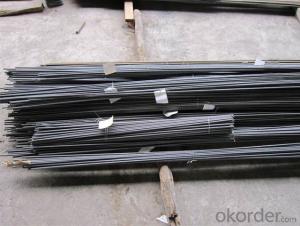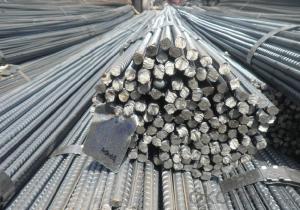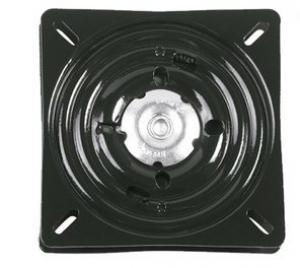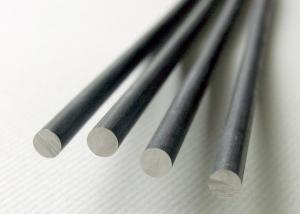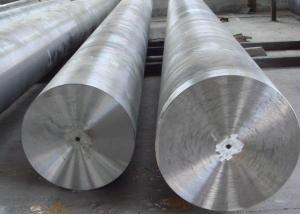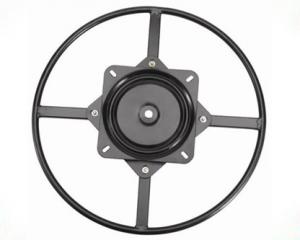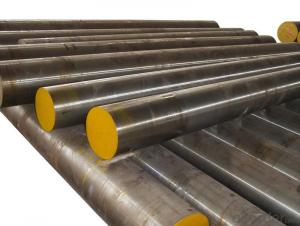Q195 TMT Steel Bars Hot Rolled Bars
- Loading Port:
- Tianjin
- Payment Terms:
- TT OR LC
- Min Order Qty:
- 25 m.t.
- Supply Capability:
- 50000 m.t./month
OKorder Service Pledge
OKorder Financial Service
You Might Also Like
Item specifice
Q195 TMT Steel Bars Hot Rolled Bars
Product Details:
Standard | GB(HRB335/HRB400/HRB500); |
BS4449 -1997 GRADE 250B, 460B; BS4449-2005 GRADE 500B; | |
ASTM A615 GRADE 40,GRADE60,GRADE75; ASTM A706; | |
DIN488-1 420S/500S, BST500S | |
JIS G3112 SD35, SD40, SD50,SD390 | |
NFA 35016 FE E 400, FE E 500 | |
CA 50/60 | |
GOST A3 R A500C | |
Surface finished | Screw-thread |
Production capacity | 50,000 MT/month |
Payment term | T/T or 100% L/C at sight |
Package | By bundles. One bundles about 2tons |
Specification:
Diameter (mm) | Weight (kg/m) |
8 | 0.395 |
9 | 0.499 |
10 | 0.617 |
11 | 0.746 |
12 | 0.888 |
13 | 1.04 |
14 | 1.21 |
15 | 1.39 |
16 | 1.58 |
17 | 1.78 |
18 | 2 |
19 | 2.23 |
20 | 2.47 |
21 | 2.72 |
22 | 2.98 |
23 | 3.26 |
24 | 3.55 |
25 | 3.85 |
28 | 4.83 |
32 | 6.31 |
36 | 7.99 |
40 | 9.87 |
50 | 15.42 |
Advantage:
· SGS and BV Audited company .
· We offer competitive price with great service .
· Finished Product Inventory-More Than 50000 Tons.
· We have win high reputation based on best quality products.
· We have the most convenient transport and fast delivery.
· We have high technical production line with top quality products.
Application:
Q195 TMT steel bar is a practical construction steel materials. It is widely used as the fitting bar for various steel bar concrete structure engineering and making of various construction components. With its high strength and the fixing strength with concrete, its sufficient plastic property, it can enhance the technical and the quality of the engineering, reduce the cost of raw materials and the cost of engineering at the same time. The finished products can be round coil or straight sizes.
Product Show:
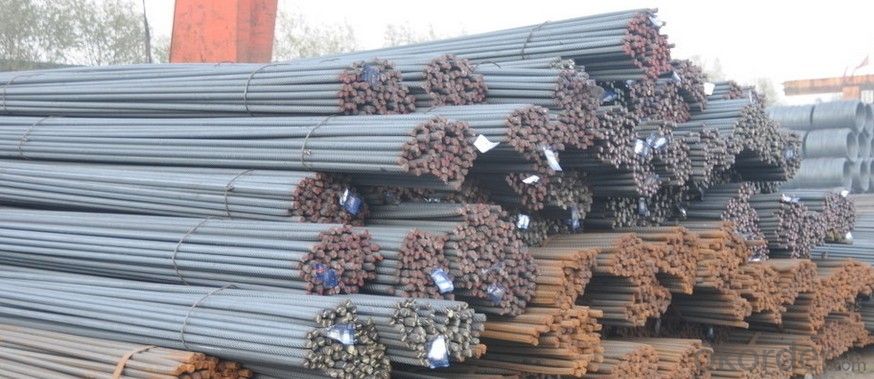
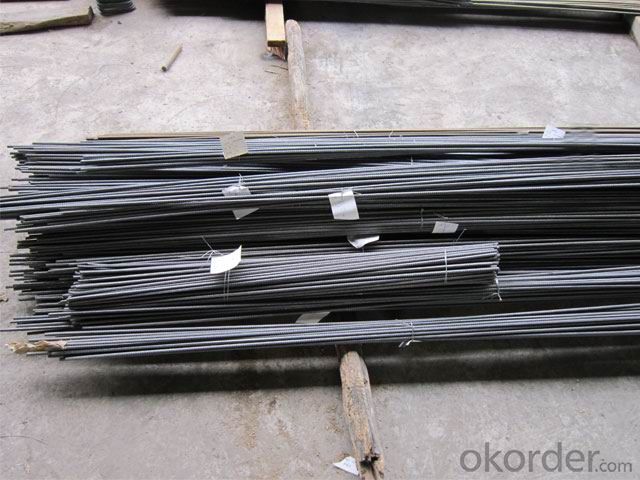

- Q:What are the properties of creep-resistant steel?
- Creep-resistant steel possesses several key properties that make it suitable for high-temperature applications. These properties include high strength, excellent resistance to deformation under constant stress at elevated temperatures, good resistance to oxidation and corrosion, and the ability to retain its mechanical properties over extended periods of time.
- Q:What are the specific requirements for special steel used in the oil and gas sector?
- The primary focus of special steel requirements in the oil and gas sector lies in its ability to withstand harsh and demanding environments. Several key requirements include: 1. Corrosion Resistance: To ensure equipment longevity and reliability in corrosive environments caused by factors like moisture, chemicals, and high temperatures, special steel must exhibit excellent corrosion resistance. 2. High Strength: Special steel must possess high strength and toughness to endure extreme pressure, stress, and load conditions in oil and gas operations. This is crucial for maintaining the structural integrity of pipelines, offshore platforms, and drilling components. 3. Low Temperature Resistance: For oil and gas operations in extremely cold conditions, such as deep-sea exploration or Arctic regions, special steel must exhibit good low-temperature toughness to prevent brittle fracture and maintain mechanical properties. 4. Weldability: To facilitate ease of fabrication and construction, special steel should have good weldability in the oil and gas sector. This is vital for joining various components and pipelines, ensuring structural integrity and minimizing failure risk. 5. Hydrogen-Induced Cracking (HIC) Resistance: Special steel must resist hydrogen-induced cracking, which can occur in the presence of hydrogen sulfide gas commonly found in oil and gas environments. HIC can lead to catastrophic failures, making it essential for the steel to be designed to prevent this phenomenon. 6. Sour Service Resistance: In certain oil and gas fields, where corrosive gases like hydrogen sulfide are present, special steel must withstand sour service conditions. This requires high resistance to sulfide stress cracking and good mechanical properties under harsh conditions. 7. Compliance with Industry Standards: Special steel used in the oil and gas sector must meet industry-specific standards and specifications, such as those set by the American Petroleum Institute (API). This ensures quality, reliability, and safety. Overall, the requirements for special steel in the oil and gas sector aim to achieve durability, reliability, and safety in challenging operating environments. While specific applications may have varying requirements, these criteria are crucial for the smooth and efficient functioning of oil and gas operations.
- Q:What are the main applications of special steel in the defense vehicles?
- Special steel is widely used in defense vehicles for various applications. It is primarily used in the manufacturing of armored vehicles and tanks to provide enhanced protection against ballistic threats. Special steel is also used for constructing structural components, such as chassis and frames, due to its high strength and durability. Additionally, it is utilized in the production of critical parts like gears, axles, and suspension systems, as it offers excellent wear resistance and toughness. Overall, special steel plays a crucial role in ensuring the reliability, performance, and safety of defense vehicles.
- Q:What are the applications of special steel in the railway industry?
- Special steel has various applications in the railway industry, primarily due to its exceptional strength, durability, and resistance to extreme conditions. It is commonly used in the manufacturing of railway tracks, ensuring their longevity and ability to withstand heavy loads and frequent train traffic. Special steel is also employed in the production of railway wheels and axles, providing enhanced wear resistance and improved performance. Additionally, it is utilized in the construction of railway bridges and tunnels, where its high tensile strength and corrosion resistance are crucial for maintaining structural integrity and safety.
- Q:How does special steel perform in terms of high-temperature strength?
- Special steel typically performs very well in terms of high-temperature strength. It has excellent resistance to thermal fatigue, oxidation, and creep, allowing it to withstand extreme heat conditions without losing its structural integrity or mechanical properties. This makes special steel a preferred choice in applications where high-temperature strength is crucial, such as in the aerospace, power generation, and petrochemical industries.
- Q:What are the different types of nitriding steel?
- There are mainly two types of nitriding steel: gas nitriding steel and plasma nitriding steel.
- Q:What are the environmental impacts of using special steel?
- The use of special steel can have several environmental impacts. Firstly, the production of special steel involves the extraction of raw materials such as iron ore and coal, which can lead to deforestation, habitat destruction, and loss of biodiversity. The mining process can also result in the release of pollutants into the air, soil, and water, contributing to air and water pollution. Another environmental impact of special steel production is the emission of greenhouse gases, particularly carbon dioxide (CO2), during the manufacturing process. The high temperatures required to melt and shape the steel, as well as the energy-intensive processes involved, result in significant CO2 emissions. These emissions contribute to climate change and global warming. Furthermore, the transportation of special steel can also have environmental consequences. The shipping and logistics involved in transporting the steel from production facilities to end-users can result in additional greenhouse gas emissions, air pollution, and fuel consumption. Additionally, the disposal of special steel products at the end of their lifecycle can pose environmental challenges. If not properly recycled or disposed of, steel products can end up in landfills, taking up valuable space and potentially leaching harmful substances into the environment. Despite these environmental impacts, it is important to note that special steel is often used in various industries due to its durability, strength, and resistance to corrosion. Efforts are being made to mitigate these impacts through the adoption of cleaner production methods, such as recycling and using renewable energy sources in the steel manufacturing process. Additionally, initiatives like carbon capture and storage are being explored to reduce greenhouse gas emissions from steel production. Overall, while the use of special steel provides numerous benefits, it is critical to balance these advantages with the need to minimize its environmental impacts through sustainable production and responsible disposal practices.
- Q:What are the different methods for controlling the grain size in special steel?
- There are several methods for controlling the grain size in special steel. 1. Heat treatment: One common method is heat treatment, which involves subjecting the steel to specific temperatures and cooling rates. This process can be used to refine the grain size by controlling the rate of nucleation and growth of new grains. For example, slow cooling can promote the formation of larger grains, while rapid cooling can result in smaller grain sizes. 2. Alloying elements: Adding certain alloying elements to the steel can also influence the grain size. For instance, elements like vanadium, niobium, and titanium can form carbides, which act as nucleation sites, leading to finer grain sizes. On the other hand, elements like aluminum and silicon can promote the formation of larger grains. 3. Mechanical deformation: Applying mechanical deformation to the steel, such as through rolling or forging, can also affect the grain size. These processes cause grain refinement by breaking up larger grains into smaller ones. Additionally, severe plastic deformation techniques like equal-channel angular pressing can produce ultrafine grains in special steel. 4. Grain growth inhibitors: Certain elements can act as grain growth inhibitors, preventing the coarsening of grain size during heat treatment. Examples of such elements include boron and zirconium. By controlling the concentration of these inhibitors, it is possible to inhibit grain growth and maintain a desired grain size. 5. Controlled cooling: Controlling the cooling rate during solidification and heat treatment is another method for controlling grain size. By carefully controlling the cooling rate, it is possible to achieve a specific grain size or a desired distribution of grain sizes. It is important to note that the choice of method for controlling grain size in special steel depends on the specific application and desired properties of the steel. Different methods may be employed in combination to achieve the desired grain size and optimize the performance of the steel for its intended use.
- Q:What are the properties of shock-resistant alloy steel?
- Shock-resistant alloy steel is known for its exceptional toughness and ability to withstand high impact and shock loads. It possesses a unique combination of strength, hardness, and ductility, making it ideal for applications in industries such as aerospace, automotive, and manufacturing. This type of steel undergoes specialized heat treatment processes to enhance its shock-resistance, thereby ensuring it can absorb and dissipate energy without fracturing or deforming. Additionally, shock-resistant alloy steel exhibits excellent corrosion resistance and can maintain its mechanical properties even in harsh environments, making it a reliable and durable material for various demanding applications.
- Q:What are the different surface coatings available for special steel?
- There are several different surface coatings available for special steel, including galvanized coatings, zinc coatings, powder coatings, epoxy coatings, and chrome coatings. These coatings provide various benefits such as corrosion resistance, improved durability, enhanced aesthetics, and increased lifespan of the steel. The choice of coating depends on the specific application and desired properties for the steel.
1. Manufacturer Overview |
|
|---|---|
| Location | |
| Year Established | |
| Annual Output Value | |
| Main Markets | |
| Company Certifications | |
2. Manufacturer Certificates |
|
|---|---|
| a) Certification Name | |
| Range | |
| Reference | |
| Validity Period | |
3. Manufacturer Capability |
|
|---|---|
| a)Trade Capacity | |
| Nearest Port | |
| Export Percentage | |
| No.of Employees in Trade Department | |
| Language Spoken: | |
| b)Factory Information | |
| Factory Size: | |
| No. of Production Lines | |
| Contract Manufacturing | |
| Product Price Range | |
Send your message to us
Q195 TMT Steel Bars Hot Rolled Bars
- Loading Port:
- Tianjin
- Payment Terms:
- TT OR LC
- Min Order Qty:
- 25 m.t.
- Supply Capability:
- 50000 m.t./month
OKorder Service Pledge
OKorder Financial Service
Similar products
New products
Hot products
Related keywords
